Blog - Therapy
Enhancing Social Skills in Children on the Autism Spectrum Using Virtual Reality
By Dr. Lynn M. Panatonni (PhD), Advisory board member at PsyTech VR
April 16, 2025
Virtual Reality technology is a groundbreaking tool in the context of therapeutic interventions that can also be applied to children on the autism spectrum. The creation of controlled and immersive environments helps VR offer unique opportunities to develop important social skills in a safe environment. Our primary goal in this article is to see how VR is revolutionizing autism therapy as a whole, opening new frontiers for social development.
What is the Role of VR in Enhancing Social Skills for Children on the Autism Spectrum?
A combination of virtual reality technology and autism therapy is a very unconventional frontier of possibilities for children that are facing various social challenges. VR can help create a bridge between controlled therapeutic environments and real-life scenarios to facilitate skill development that can be translated into everyday interactions. Such a technology relies a lot on customizable experiences, tailored to each child’s specific comfort levels and development goals.

The Science Behind VR and Autism: How It Works
High effectiveness of VR for children with autism spectrum disorder is a direct result of its ability to engage several sensory systems at once while maintaining complete control over the virtual environment. Multisensory stimulation can activate neural pathways that are associated with social perception and response, offering a high chance of strengthening underdeveloped connections.
The immersive nature of VR experiences can trigger the mirror neuron system – brain cells that fire both when actions are performed and when actions are observed. Neuron activity like that plays an important role in understanding the intentions and emotions of other people – areas that are often challenging for children on the spectrum.
Another important value of VR comes from its ability to isolate and focus on a small number of specific social cues without creating a situation where sensory distractions become overwhelming. Children can use it to practice recognizing facial expressions, maintaining eye contact, and interpreting tone of voice – all in a setting where each of these elements can be gradually adjusted to increase complexity.
Understanding Virtual Reality and Its Applications
As mentioned before, Virtual Reality as a technology can create computer-generated environments for users to experience with the help of a specialized headset (and, sometimes, additional equipment – such as motion-tracking gloves). VR is a large industry already, with many variations to choose from – ranging between simple smartphone-based viewers to complex room-scale setups with the ability of physical movement in virtual reality.

As for the autism therapy applications, VR systems often fall into one of two categories:
- Augmented reality systems that can overlay digital elements onto the real world.
- Fully immersive systems that can replace the real-world environment with virtual scenarios.
VR technology’s flexibility also means that any treatment can evolve alongside the progress of each child separately. Therapists are free to adjust difficulty levels, gradually introducing new and harder challenges to address specific triggers or fears that impede social development.
How Does Virtual Reality Function as Therapy for Autism?
Social skills development in the world of therapy went through a significant paradigm shift with the introduction of virtual reality. Traditional interventions relied mostly on role-playing or verbal instructions, while VR can create immersive three-dimensional experiences capable of engaging multiple learning pathways at once. A multisensory approach like this helps children practice social skills in authentic-feeling environments while also remaining under complete control in a therapy session.

The Mechanism of Immersive Virtual Reality in Therapy
Immersive virtual reality can create something that neuroscientists refer to as presence – the feeling of actually being in the virtual environment while simultaneously knowing it is not real. When it comes to children with autism, the presence can help them activate neural systems involved in social interaction without triggering the anxiety that usually accompanies real-world social scenarios.
The remarkable neuroplasticity of a brain is the primary reason why this therapeutic mechanism even works in the first place. The ability to form neural connections through repeated experiences is the foundation of behavior change and the fact that it can be triggered using virtual reality environments is nothing short of groundbreaking.
A gradual increase in the complexity of social challenges is how VR therapy builds neural pathways in a progressive manner. A systematic desensitization approach is how the brain learns to adapt to social stimuli that might have triggered stress responses before.
The remarkable neuroplasticity of a brain is the primary reason why this therapeutic mechanism even works in the first place. The ability to form neural connections through repeated experiences is the foundation of behavior change and the fact that it can be triggered using virtual reality environments is nothing short of groundbreaking.
A gradual increase in the complexity of social challenges is how VR therapy builds neural pathways in a progressive manner. A systematic desensitization approach is how the brain learns to adapt to social stimuli that might have triggered stress responses before.
How VR Mimics Real-World Social Interactions
One of the biggest advantages of VR therapy is its ability to replicate different kinds of nuances in human interaction that would be difficult to achieve with conventional therapy methods. This includes subtle facial expressions, natural body language, and realistic conversational patterns to help children recognize all the communication elements that usually remain unspoken.
What distinguishes effective VR environments is their attention to various social details that neurotypical individuals tend to process unconsciously. Perhaps most importantly, such virtual interactions also offer consequence-free practice – the ability to make mistakes, receive feedback, and try again without the threat of being rejected or bullied.
What distinguishes effective VR environments is their attention to various social details that neurotypical individuals tend to process unconsciously. Perhaps most importantly, such virtual interactions also offer consequence-free practice – the ability to make mistakes, receive feedback, and try again without the threat of being rejected or bullied.

What Are the Benefits of Using Virtual Reality for Social Interaction?
Novelty and technological appeal are not the only advantages of VR in social skill development. VR helps create opportunities for repeated practice in scenarios that would be downright impossible to create with traditional means. Such immersive experiences can offer several important benefits that we are going to review below.
Enhancing Social Skills through Interactive Scenarios
The interactiveness itself is a massive advantage of VR in therapy – offering dynamic learning environments where children can practice specific social skills. Unlike role-play or video modeling, VR can allow children to participate in various social situations and receive immediate feedback about their behaviors and responses.
Scenarios like these can target very specific skills – recognizing emotional cues, practicing greetings with unfamiliar people, maintaining appropriate conversation distance, etc. A high degree of customizability is another important factor here – creating optimal learning experiences for children to avoid both too easy and too complex situations.
Scenarios like these can target very specific skills – recognizing emotional cues, practicing greetings with unfamiliar people, maintaining appropriate conversation distance, etc. A high degree of customizability is another important factor here – creating optimal learning experiences for children to avoid both too easy and too complex situations.
Reducing Anxiety in Individuals with Autism
Social anxiety is a significant barrier to developing any interaction skills when it comes to children with autism. Virtual reality is incredibly helpful here, offering a psychological buffer of sorts that can reduce such anxiety by creating a safe space where a lot of necessary skills can be learned without the stress of potential consequences.
Anxiety reduction in such environments only occurs because of the presence we mentioned before – where children know the environment is not real, but their brains process experiences as if the situations were actually real. Additionally, a lot of children that tend to remain silent in group therapy also engage with virtual characters much more actively, creating growth opportunities that would not exist otherwise.
Anxiety reduction in such environments only occurs because of the presence we mentioned before – where children know the environment is not real, but their brains process experiences as if the situations were actually real. Additionally, a lot of children that tend to remain silent in group therapy also engage with virtual characters much more actively, creating growth opportunities that would not exist otherwise.
Improving Communication Skills with VR
Communication challenges are often at the center of social skills issues, and this applies not only to children but to almost anyone on the autism spectrum. Virtual reality can address these issues through careful isolation of specific communication components in environments where distractions can be minimized.
VR programs can already do a great job in highlighting subtle communication elements that would probably go unnoticed otherwise, such as changes in body positioning or facial expression. As children perform more practice runs for identifying these cues, the programs can gradually reduce the amount of assistance provided, building independent communication skills as a result.
VR programs can already do a great job in highlighting subtle communication elements that would probably go unnoticed otherwise, such as changes in body positioning or facial expression. As children perform more practice runs for identifying these cues, the programs can gradually reduce the amount of assistance provided, building independent communication skills as a result.

Comparing VR Therapy with Traditional Autism Interventions
When compared with traditional social skill development courses, virtual reality has a respectable number of advantages. For starters, VR offers an active learning experience, which is different from social stories or video modeling – children have to respond to social situations instead of just observing them, which creates stronger neural connections for future use in the real-world.
Traditional role-play therapy also depends a lot on the ability of a therapist to create realistic scenarios and offer consistent responses. Both of these limitations are completely unnecessary in Virtual Reality due to them being replaced with programmable interactions. At the same time, the data collection capabilities of VR devices offer precise progress tracking to help therapists identify specific areas to focus on in the future, using an evidence-based approach to be more accurate and generally faster than any traditional method.
Traditional role-play therapy also depends a lot on the ability of a therapist to create realistic scenarios and offer consistent responses. Both of these limitations are completely unnecessary in Virtual Reality due to them being replaced with programmable interactions. At the same time, the data collection capabilities of VR devices offer precise progress tracking to help therapists identify specific areas to focus on in the future, using an evidence-based approach to be more accurate and generally faster than any traditional method.
Can Virtual Reality Help Children with Autism Spectrum Disorder Learn Real-life Skills?
Beyond basic social interactions, VR also has a lot of potential for tracking practical life skills contributing to community integration and even independence. The ability to simulate everyday environments with a high degree of believability offers many opportunities to practice various functional skills that would be very difficult to learn otherwise.
Creating Realistic Social Situations in VR
Virtual reality environments are excellent for recreating complex social environments that children navigate in day-to-day lives. This includes public transport, grocery stores, restaurants, and even medical appointments – all simulated with remarkable accuracy and complete therapeutic control.
The attention to detail that VR makes possible also affects the efficiency of the treatment. Appropriate background noise levels, unexpected social variables, and realistic crowd movements are just a few examples of how VR environments feel very close to reality. Prolonged practice in such environments before facing their real-world counterparts dramatically increases the chances of children developing competence and confidence when it comes to facing the real world as a whole.
The attention to detail that VR makes possible also affects the efficiency of the treatment. Appropriate background noise levels, unexpected social variables, and realistic crowd movements are just a few examples of how VR environments feel very close to reality. Prolonged practice in such environments before facing their real-world counterparts dramatically increases the chances of children developing competence and confidence when it comes to facing the real world as a whole.
Creating a Safe Place with VR
Psychological safety of a virtual environment is another valuable factor VR experiences provide. In these environments children are free to make mistakes and face challenging interactions without fear of judgment or any lasting consequences.
A sense of safety contributes to creating an ideal learning environment where children often willingly attempt interactions they would have avoided in real life, repeating these scenarios over and over. Graduated exposure like that helps build resilience while also minimizing the anxiety that might interfere with skill improvement processes.
A sense of safety contributes to creating an ideal learning environment where children often willingly attempt interactions they would have avoided in real life, repeating these scenarios over and over. Graduated exposure like that helps build resilience while also minimizing the anxiety that might interfere with skill improvement processes.
The Role of Parents and Therapists in VR Sessions
Technology’s role in therapy sessions is important, but it is still only a part of the process that should also include therapists and parents. Therapists are important for customizing VR experiences, addressing specific goals and offering real-time coaching to children during sessions. Parents have to work with children outside of therapeutic environments, creating opportunities to apply new skills in everyday settings, reinforcing what was practiced in VR sessions, and offering feedback to therapists when it comes to virtual scenarios that have been the most effective to their child.
Such a collaborative approach is crucial to make the most of VR-assisted interventions, with technology offering the learning environment and human connection being used to offer context, meaning, and relational elements to the process.
Such a collaborative approach is crucial to make the most of VR-assisted interventions, with technology offering the learning environment and human connection being used to offer context, meaning, and relational elements to the process.
Types of Virtual Reality Programs Designed for Autism
A diverse range of programs targeting specific areas could be found in the growing field of autism-focused VR software.
Practical life skill programs help simulate everyday tasks such as public transportation or grocery shopping, while social interaction programs focus on conversation skills and appropriate behavior responses. Academic and vocational programs are a slightly different category that helps navigate practice job skills or classroom expectations, depending on the patient.
Each type of software uses its own levels of immersion and interaction based on what works best for a specific goal. The ability to customize each of these environments also helps ensure that virtual reality interventions would remain adaptable when it comes to addressing each patient’s personal challenges, no matter how specific they might be.
Practical life skill programs help simulate everyday tasks such as public transportation or grocery shopping, while social interaction programs focus on conversation skills and appropriate behavior responses. Academic and vocational programs are a slightly different category that helps navigate practice job skills or classroom expectations, depending on the patient.
Each type of software uses its own levels of immersion and interaction based on what works best for a specific goal. The ability to customize each of these environments also helps ensure that virtual reality interventions would remain adaptable when it comes to addressing each patient’s personal challenges, no matter how specific they might be.
What Are the Future Prospects of Virtual Reality in Treating Individuals on the Autism Spectrum?
Like any other branch of VR-assisted therapy, autism intervention processes continue to evolve rapidly. As technological capabilities expand and improve, the future of VR therapy holds a lot of promise. There are many emerging developments that suggest we are only at the beginning of the journey, with the bulk of the potential for this technology becoming available in the future as methods evolve and hardware improves.

Innovations in VR Technology for Autism Treatment
Greater immersion, improved sensory experiences, and enhanced interactions are the primary targets for future development of virtual reality as a technology. Haptic feedback systems that are relatively recent can now allow children to feel interactions and virtual objects, creating another dimension to social learning experiences. As we mentioned, multisensory engagement is great for creating stronger neural connections that would not be possible with traditional methods.
Artificial Intelligence transforms the way virtual characters respond to patients, as well. Instead of following pre-programmed scripts, AI-powered virtual entities can adapt their responses based on the communication patterns of each person, as well as their emotional state and learning progress. A system of dynamic responsiveness like that helps make social exchanges more authentic, better preparing children for the unpredictable nature of real-world interactions while collecting an abundance of information for future analysis.
Artificial Intelligence transforms the way virtual characters respond to patients, as well. Instead of following pre-programmed scripts, AI-powered virtual entities can adapt their responses based on the communication patterns of each person, as well as their emotional state and learning progress. A system of dynamic responsiveness like that helps make social exchanges more authentic, better preparing children for the unpredictable nature of real-world interactions while collecting an abundance of information for future analysis.

Research Directions in Virtual Reality and Autism
Research into virtual reality interventions have long since expanded beyond basic skill acquisition. Now it attempts to explore how these technologies might even address the underlying neurological differences that are common for patients with autism. Preliminary studies already suggest that extended VR therapy can strengthen neural pathways related to social cognition, with the potential of creating lasting changes in the way individual brains process social information.
Certain studies also indicate that children with specific cognitive profiles respond a lot stronger to virtual reality therapy, creating an assumption that different patients may have their own selection of methods that works best for them. Such a phenomenon is referred to as the precision medicine approach, which aims to match each patient with the intervention method that is most likely to work for them instead of applying common virtual reality therapy techniques.
Certain studies also indicate that children with specific cognitive profiles respond a lot stronger to virtual reality therapy, creating an assumption that different patients may have their own selection of methods that works best for them. Such a phenomenon is referred to as the precision medicine approach, which aims to match each patient with the intervention method that is most likely to work for them instead of applying common virtual reality therapy techniques.
The Role of AI in Enhancing VR Therapy for Autism
Artificial intelligence is often considered the most transformative element of next-gen VR therapy. AI systems can analyze patterns in the responses of children to identify specific social challenges that human observers might have missed. For example, subtle avoidance behaviors during certain types of social interactions are usually very difficult to notice with the naked eye, but AI systems usually have a higher chance of detecting such micro-anomalies in behavior.
Machine learning algorithms also continue their improvements, making virtual characters more and more real by simulating natural movements, detailed facial expressions, and complex conversational patterns. Earlier VR therapy had a lot of complaints about the interactions being too artificial to build genuine social skills, and the system has improved greatly since then – while showing no signs of plateauing in the near future.
Machine learning algorithms also continue their improvements, making virtual characters more and more real by simulating natural movements, detailed facial expressions, and complex conversational patterns. Earlier VR therapy had a lot of complaints about the interactions being too artificial to build genuine social skills, and the system has improved greatly since then – while showing no signs of plateauing in the near future.
How Can Virtual Reality Improve Communication Skills in Children with Autism?
Communication is one of the most challenging areas for many children on the autism spectrum. Virtual reality has several notable advantages when it comes to developing verbal and non-verbal communication skills, breaking down complex social exchanges into smaller, manageable components. The ability to highlight subtle communication elements while offering structured practice opportunities is a direct solution to the issue of communication a lot of children face on a regular basis.
Techniques for Teaching Social Skills through VR
Effective VR programs use specialized techniques created to build communication skills in a progressive fashion. Visual supports can offer concrete clues to help children interpret more abstract social concepts, and there is always the ability to reduce these supports or outright remove them as the concepts become more internalized for the patient.
The most successful approaches in this area include the following methods:
- Behavioral feedback loops offer immediate reinforcement for using the correct communication methods.
- Hierarchical skill building starts with basic elements before moving to more complex exchange sequences.
- Social narrative integration can help children understand the reasoning behind different communication rules.

Measuring the Effectiveness of VR in Improving Communication
Comprehensive measurement approaches are necessary to assess the entire impact of virtual reality interventions, capturing not only immediate skill acquisition, but also real-world transfer. Direct observational measures can help track specific communication behavior during VR sessions, and standardized assessments help evaluate how the newly acquired skills are transferred to natural environments.
Neuroimaging studies offer another valuable perspective, measuring changes in brain activity associated with social communication. Research with functional MRI has shown that some children tend to show increased activation in social perception-related brand regions after extensive VR therapy. Neurological changes like these often correlate with significant behavioral improvements that can be seen by parents or teachers, suggesting that virtual reality does create meaningful changes in the way the brain processes social communication cues.
Neuroimaging studies offer another valuable perspective, measuring changes in brain activity associated with social communication. Research with functional MRI has shown that some children tend to show increased activation in social perception-related brand regions after extensive VR therapy. Neurological changes like these often correlate with significant behavioral improvements that can be seen by parents or teachers, suggesting that virtual reality does create meaningful changes in the way the brain processes social communication cues.
What are the Key Life Skills Taught through Virtual Reality?
Outside of social communication, virtual reality can also be used to develop valuable life skills that assist with independence and community participation. Such skills are often exceptionally challenging for children on the autism spectrum, even though they are completely essential for successful functioning as an adult. Virtual Reality’s capability to simulate real-world environments makes this technology uniquely suitable for teaching these skills in a supportive and structured context.
Essential Life Skills for Children on the Autism Spectrum
Life skills that tend to be the most effectively addressed through virtual reality tend to involve potentially anxiety-provoking situations or complex social elements. A lot of daily living skills benefit from virtual practice before real-world application – be it grocery shopping, using public transportation, etc. Most of these scenarios involve multiple social rules, unpredictable interactions, and sensory challenges that can be introduced in a gradual manner in a controlled virtual reality environment.
Safety skills are another area of expertise where virtual reality can be of great assistance. In this, children can practice emergency responses, handling unexpected social approaches from strangers, street crossing, and so on. Community navigation skills can also be practiced in a similar manner before attempting them in real-life to avoid overwhelming the child in real life. Each of these cases uses VR as a bridge between conceptual understanding and practical application to create direct learning opportunities to build competence and confidence.
Safety skills are another area of expertise where virtual reality can be of great assistance. In this, children can practice emergency responses, handling unexpected social approaches from strangers, street crossing, and so on. Community navigation skills can also be practiced in a similar manner before attempting them in real-life to avoid overwhelming the child in real life. Each of these cases uses VR as a bridge between conceptual understanding and practical application to create direct learning opportunities to build competence and confidence.

What Challenges Exist in Implementing VR for Autism?
Despite the considerable list of advantages, virtual reality therapy for autism also has a number of substantial hurdles that limit its effectiveness and popularity. Both parents and clinicians have to understand these challenges of VR interventions, and the same could be said for developers that work on such technologies to begin with. Being able to address the limitations in a thoughtful manner would be an important factor for continued evolution of VR as a therapeutic tool in the near future.
Barriers to Accessing Virtual Reality Therapy
One of the biggest barriers for many families and practices by far is the equipment cost. While it is true that the cost of consumer-grade headsets went down a lot in recent years, the comprehensive therapeutic systems with specialized software remain incredibly expensive to this day. A financial barrier like this creates an equity gap of sorts, with only certain populations being able to access such transformative technologies.
Geographic disparities also tend to influence the accessibility of specialized VR therapy, with many programs concentrating in urban centers and at major research institutions. Families that live in underserved or rural communities would have to travel significant distances to access these practices, making it challenging to remain consistent in therapeutic processes.
Technical expertise necessary to operate and maintain specialized VR systems tends to be a challenge in its own right, especially in situations where support and technological resources remain limited.
It is true that a lot of these challenges can be addressed in some way or another, with organizations using lending libraries, mobile VR therapy units, and remote training programs – but the issues themselves remain prevalent in many cases where such options are not available.
Geographic disparities also tend to influence the accessibility of specialized VR therapy, with many programs concentrating in urban centers and at major research institutions. Families that live in underserved or rural communities would have to travel significant distances to access these practices, making it challenging to remain consistent in therapeutic processes.
Technical expertise necessary to operate and maintain specialized VR systems tends to be a challenge in its own right, especially in situations where support and technological resources remain limited.
It is true that a lot of these challenges can be addressed in some way or another, with organizations using lending libraries, mobile VR therapy units, and remote training programs – but the issues themselves remain prevalent in many cases where such options are not available.
Technical Limitations of VR Solutions
Modern-day VR technology is still far from perfect, and a lot of its limitations tend to impact its therapeutic effectiveness, as well. A lot of children with autism tend to experience sensory sensitivities that make wearing headsets less than pleasant, or straight-up intolerable. Additional discomfort can be created by the helmet’s weight, pressure points, and heat generation, interfering with therapeutic engagement in its own way. Sensory adaptation is still a substantial challenge for many potential users, even though the hardware itself keeps improving at an impressive pace.
Technical issues such as motion sickness also tend to affect a certain range of users during VR therapy, especially in fully immersive environments with complex movement requirements. Nausea and discomfort caused by virtual reality can undermine the therapeutic benefits, creating negative associations with the intervention process.
Visual fidelity of virtual environments still lacks the subtle details of real human interactions, despite continuous improvement processes. Such limitations make it difficult to emulate facial expressions and micro-expressions fluidly, limiting the effectiveness of skill transfer into the real world. All these challenges can be addressed in some way, but the process in question is still ongoing, with more improvements expected in the future.
Technical issues such as motion sickness also tend to affect a certain range of users during VR therapy, especially in fully immersive environments with complex movement requirements. Nausea and discomfort caused by virtual reality can undermine the therapeutic benefits, creating negative associations with the intervention process.
Visual fidelity of virtual environments still lacks the subtle details of real human interactions, despite continuous improvement processes. Such limitations make it difficult to emulate facial expressions and micro-expressions fluidly, limiting the effectiveness of skill transfer into the real world. All these challenges can be addressed in some way, but the process in question is still ongoing, with more improvements expected in the future.

Frequently Asked Questions
Can using VR at home enhance social skills practice for children with autism outside of therapy sessions?
Home-based virtual reality can be used for additional practice opportunities in a familiar environment outside of specialized therapeutic locations. The best results can only be achieved by following the recommendations of a therapist on which program to use in order to align with the specific treatment goals of your child. Regular communication with the therapy team can help ensure that home practice reinforces instead of contradicting professional intervention strategies.
What role do sensory sensitivities play in the effectiveness of VR therapy for children on the autism spectrum?
Sensory sensitivities have a drastic impact on the effectiveness of VR therapy, requiring thoughtful accommodation via customizable settings for different aspects of the environment. Using only brief sessions at first and making them longer as time goes on is a good way to build tolerance without overwhelming the patient. As for children with substantial sensitivities, certain alternative approaches might be better entry points than regular VR – with projection-based virtual reality being a possible alternative.
How can combining VR with other therapies improve social outcomes for children with autism?
Studies have shown that an integrated approach with virtual reality combined with ABA, CBT, or speech therapy is usually the most effective on average. The primary advantage of VR is the ability to act as a bridge between theoretical knowledge of social concepts and practical application of those concepts in real-world environments. Combining VR therapy with other methods often makes the treatment more effective when done correctly.
PsyTechVR: made by professionals,
for professionals
These psychotherapists and psychologists define the development of our product and methodology since 2020
- Dr. Albert "Skip" Rizzo
Leading expert in VR Therapy with 30+ years' experience.
VR scientist (ResearchGate)
Clinical psychologist. With 30+ years in VR research, Dr. Rizzo has developed groundbreaking VR tools for treating PTSD, TBI, autism - Dr. Udi OrenClinical psychologist and senior medical psychologist, PhDPast President at EMDR-EUROPE, Chief instructor of the EMDR method in Israel (Senior Trainer), President of Israel EMDR Association
- Dr. Gwilym RoddickPsychotherapist (DSW, LCSW), Founder of CBT of Central and South FloridaCBT/ERP/ACT expert, OCD Central and South Florida Board Member, ABCT committee member, Florida and New York based
- Dr. Lynn PanattoniClinical psychologist specializing in integrative and functional medicine, PhDLicensed clinical psychologist specializing in trauma, anxiety, and integrative mental health. Expert in CBT, mindfulness & lifestyle medicine
- Dr. Elizabeth McMahon
Clinical Psychologist since 1980, author of Virtual Reality Therapy for Anxiety" book
In memory of Dr. Elizabeth McMahon (1950-2024), whose vision and contributions continue to guide our mission - Dr. Gianni SerraClinical Psychologist and Psychotherapist, Certified Neuroscience specialistEvangelist of VR exposure therapy in Italy and member of the Italian Society of Cognitive Behavioral Psychotherapy
- Dr. Richard LambProfessor of Educational Psychology, Neurocognition Science Lab, University of GeorgiaPhD in science education and educational measurement. Dr. Lamb leverages neuroscience and VR to enhance STEM education
PsyTechVR:
by professionals,
for professionals
by professionals,
for professionals
These psychotherapists & psychologists define the roadmap and r&d of our company since 2020
Clinical Psychologist, Psychotherapist (CBT), Certified Neuroscience specialist
Dr. Gianni Serra
Evangelist of VR exposure therapy in Italy and member of the Italian Society of Cognitive Behavioral Psychotherapy
Dr. Albert "Skip" Rizzo
Clinical psychologist. With 30+ years in VR research, Dr. Rizzo has developed groundbreaking VR tools for treating PTSD, TBI, autism
Dr. Elizabeth McMahon
In memory of Dr. Elizabeth McMahon (1950-2024), whose vision and contributions continue to guide our mission
Clinical psychologist specializing in integrative and functional medicine, PhD
Dr. Lynn Panattoni
Licensed clinical psychologist specializing in PTSD, anxiety, and integrative mental health. Expert in CBT, mindfulness & lifestyle medicine
Psychotherapist (DSW, LCSW), Founder of CBT of Central and South Florida
Dr. Gwilym Roddick
CBT/ERP/ACT expert, OCD Central and South Florida Board Member, ABCT committee member, Florida and New York based
Clinical psychologist and senior medical psychologist, PhD
Dr. Udi Oren
Past President at EMDR-EUROPE, Chief instructor of the EMDR method in Israel, Chairman of Israel EMDR Association


Complete VR Therapy Package for $1599
Buying options
PsyTechVR Bundle
Your VR headset
Book a DEMO to get a 30-day FREE TRIAL, then use your own VR device or order a Meta Quest separately
30-day Free Trial, then $120/month
Includes the latest Meta Quest 3s, 12-month access, regular updates, support, training, and marketing materials
VR Exposure Therapy Bundle
Special offer: 35% off Storewide
$
1,599
$
2,499
- Latest Meta Quest 3s (128GB) VR Headset with the installed VR app
- 12-Month Access to PsyTechVR Platforms
- Generative-AI to create exposure scenarios
- Dedicated Support Manager
- Comprehensive 4-Hour Training & Certificate
- Exclusive Marketing Materials for your website and social media
*VR headset will belong to you with full access to the VR app store
Thanks for reading!
Dr. Lynn M. Panattoni
Advisory Board member at PsyTechVR
She holds a specialization in anxiety, depression, attachment, pain, trauma, and transformative mental health approaches. Dr. Panattoni is knowledgeable in addressing various issues with lifestyle and mental health that result from autoimmune diseases, particularly Lyme disease. She is a known advocate for lifestyle medicine that focuses on stress management, nutrition, exercise, and sleep as the means of improving health outcomes.
Her primary approaches to therapy include Trauma-Focused Therapy, Limbic System Therapy, Cognitive Behavioral Therapy, Solution-Focused Brief Therapy, MindfulnessBased Therapy, Attachment-Based Therapy, and Family Systems. Additionally, she can provide individual, couples, and family therapy, as well as educational and career counselling.
In addition to her clinical practice, Dr. Panattoni is a classically trained singer with a Bachelor of Arts in classical voice. She has performed in operas and musical theater productions across the country and enjoys traveling to learn about different cultures and cuisines.
Dr. Panattoni has the position of an advisor for VR mindfulness and relaxation development, offering methodological and ideational guidance in order to enhance the EMDR VR integration efforts. Her expertise in stress management and mindfulness-based therapies greatly contribute to the integration of efficient relaxation techniques in VR applications.
During her entire multifaceted career, Dr. Panattoni managed to demonstrate strong commitment to holistic health, using her expertise in different fields to promote both mental and physical well-being.
Her primary approaches to therapy include Trauma-Focused Therapy, Limbic System Therapy, Cognitive Behavioral Therapy, Solution-Focused Brief Therapy, MindfulnessBased Therapy, Attachment-Based Therapy, and Family Systems. Additionally, she can provide individual, couples, and family therapy, as well as educational and career counselling.
In addition to her clinical practice, Dr. Panattoni is a classically trained singer with a Bachelor of Arts in classical voice. She has performed in operas and musical theater productions across the country and enjoys traveling to learn about different cultures and cuisines.
Dr. Panattoni has the position of an advisor for VR mindfulness and relaxation development, offering methodological and ideational guidance in order to enhance the EMDR VR integration efforts. Her expertise in stress management and mindfulness-based therapies greatly contribute to the integration of efficient relaxation techniques in VR applications.
During her entire multifaceted career, Dr. Panattoni managed to demonstrate strong commitment to holistic health, using her expertise in different fields to promote both mental and physical well-being.
Dr. Lynn Panattoni is a licensed functional psychotherapist with substantial experience in education, research, and authoring in mental health and wellness fields.

Read more about PsyTech VR
We publish articles on phobias, mental health, upcoming events, and special offers
| | Get in touch We're ready to lead you into the future of mental health Sending this information you agree to share your personal information according and limited by our confidentiality statement. |
Safe and secure

Welcome!
We're excited to offer you the chance to experience the power of PsyTech VR with a FREE Trial!
We use cookies
Cookie-files settings
Cookies necessary for the website to function correctly are always enabled. The rest of the settings are changeable, you can see them below.


 PsyTechVR
PsyTechVR





